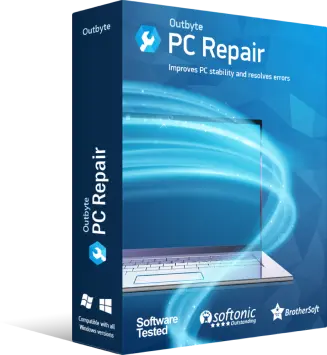Repair Utility
- File name: pc-repair-setup.exe
- Tool''s Developer: Outbyte
- Certified by: Symantec
- Download Size: 24 MB
- Downloaded: 1,143,473 times
-
Rating:

 Start Download
Start Download
Windows Operating Systems



Download 802.11n WiFi Adapter Driver
Wireless connectivity has become a cornerstone of modern computing, and the 802.11n WiFi standard remains a popular choice for many users due to its balance of speed and reliability. However, issues with your WiFi adapter driver can disrupt your internet experience, leaving you frustrated and disconnected. If you’re struggling with a malfunctioning or missing 802.11n WiFi adapter driver, this guide will help you understand the root causes, walk you through the steps to resolve the problem, and restore your connection.
1. Causes of 802.11n WiFi Adapter Driver IssuesBefore diving into solutions, it’s essential to identify why your 802.11n WiFi adapter driver might be causing problems. Here are the most common culprits:
- a. Outdated or Corrupted Drivers
Over time, drivers can become outdated due to system updates or software conflicts. A corrupted driver—often caused by improper shutdowns, malware, or failed updates—can also render your WiFi adapter unusable.
- b. Accidental Deletion or Uninstallation
During routine system cleanups or software removals, users sometimes unintentionally delete critical driver files. This mistake can leave your operating system without the necessary software to communicate with the WiFi adapter.
- c. Windows Update Conflicts
While Windows automatically updates drivers, these updates may not always be compatible with older hardware. An incompatible driver pushed through Windows Update can cause connectivity issues or complete failure of the adapter.
- d. Incompatible Third-Party Software
Antivirus programs, VPNs, or network management tools occasionally interfere with WiFi drivers, blocking their functionality or preventing proper installation.
- e. Hardware Recognition Failure
In rare cases, your operating system might fail to detect the WiFi adapter altogether. This issue could stem from physical damage to the adapter, loose connections (in the case of USB adapters), or a disabled device in the system BIOS/UEFI.
Resolving driver-related problems requires a systematic approach. Follow these steps to download, install, or repair your 802.11n WiFi adapter driver:
- Step 1: Identify Your WiFi Adapter Model
Before downloading any driver, determine the exact model of your WiFi adapter. To do this:
- Open the Device Manager by right-clicking the Start menu and selecting it from the list.
- Expand the Network adapters section.
- Look for an entry with “802.11n” or a similar designation. Right-click it and select Properties.
- Navigate to the Details tab, select Hardware Ids from the dropdown menu, and note the VEN_**** and DEV_**** codes. These codes help identify the manufacturer and model.
- Step 2: Download the Correct Driver
Once you know your adapter’s model or manufacturer:
- Visit the official website of your laptop or adapter manufacturer (e.g., Intel, TP-Link, Dell).
- Use the search bar to locate the driver section for your specific model.
- Download the driver compatible with your operating system (e.g., Windows 10 64-bit).
Pro Tip: If the official site doesn’t list the driver, use the VEN_**** and DEV_**** codes to search for the driver on trusted databases like PCI Database or DriverGuide.
- Step 3: Install the Driver Manually
After downloading the driver:
- Open Device Manager again.
- Right-click your 802.11n adapter (or an unknown device if the adapter isn’t recognized) and select Update driver.
- Choose Browse my computer for drivers and navigate to the downloaded driver file.
- Follow the on-screen prompts to complete the installation.
- Step 4: Use Windows Update (Alternative Method)
If manual installation fails:
- In Device Manager, right-click the adapter and select Update driver.
- Choose Search automatically for drivers to let Windows find and install a generic driver.
- Step 5: Roll Back or Uninstall Problematic Drivers
If the issue began after a recent update:
- In Device Manager, right-click the adapter and select Properties.
- Go to the Driver tab and click Roll Back Driver (if available) to revert to the previous version.
- If rolling back isn’t possible, click Uninstall Device and restart your computer to trigger a fresh driver installation.
- Step 6: Check for Hardware Issues
If software fixes don’t work:
- Test the WiFi adapter on another computer to rule out hardware failure.
- For internal adapters, ensure the device is enabled in the BIOS/UEFI settings.
- For USB adapters, try a different port.
- Step 7: Disable Conflicting Software
Temporarily turn off antivirus tools, firewalls, or VPNs to check if they’re blocking the driver. Re-enable them one by one to identify the culprit.
A faulty 802.11n WiFi adapter driver can disrupt your workflow, but with the right troubleshooting steps, you can resolve the issue efficiently. Start by identifying the root cause—whether it’s an outdated driver, accidental deletion, or hardware conflict—and follow the systematic installation or repair process outlined above. Always prioritize downloading drivers from official sources to avoid malware or compatibility risks. If problems persist, consider consulting a professional technician or replacing older hardware that no longer supports updated drivers.
By maintaining up-to-date drivers and periodically checking your system’s health, you can ensure a stable and speedy wireless connection for years to come.
|
Ensure seamless connectivity with the CSR8510 A10 Bluetooth Driver, designed to deliver a stable wireless experience and optimized performance. This driver enhances compatibility, reduces latency, and supports reliable data transfer for uninterrupted audio, peripheral, and device connectivity. Perfect for users seeking consistent Bluetooth functionality and improved system efficiency.
|
|
ASUS Smart Gesture revolutionizes laptop interaction with seamless touchpad controls, enabling intuitive gestures like multi-finger swipes, pinch-to-zoom, and smooth scrolling. Designed to streamline workflows, it enhances precision and responsiveness while offering customizable settings for personalized efficiency. Elevate productivity with effortless navigation tailored to modern multitasking needs.
|
|
Download the latest HP LaserJet Pro P1606dn printer drivers to ensure seamless compatibility with your operating system. Get official software for Windows, macOS, and other platforms to optimize print quality, enable advanced features, and maintain reliable performance. Always source drivers from HP’s official support site for security and updates.
|
|
The CH341A USB Programmer is a versatile, cost-effective tool designed for reading, writing, and modifying EEPROM, Flash memory, and BIOS chips. Compatible with a wide range of 24/25-series memory chips, it simplifies firmware updates, data recovery, and hardware repairs. Its USB interface ensures easy connectivity to PCs, while user-friendly software streamlines programming tasks for hobbyists and professionals alike. Ideal for electronics projects, device repairs, or DIY BIOS mods.
|
|
Learn to install Realtek Audio Driver on Windows 10 in simple steps. Check your current driver version, download the latest driver from Realtek’s official site or your PC manufacturer’s portal, and follow the installation wizard. Restart your system afterward for changes to take effect. Fix audio issues by ensuring compatibility and troubleshooting driver conflicts.
|
|
The Intel USB 3.0 Extensible Host Controller Driver ensures seamless operation of USB 3.0 ports on Intel-based systems, enabling high-speed data transfer and compatibility with USB 3.0 devices. This driver optimizes performance, resolves connectivity issues, and maintains stable communication between the operating system and hardware. Regular updates are recommended for enhanced functionality and security.
|
|
Learn how to set up your Epson L3250 printer effortlessly with this step-by-step guide. Unbox the printer, install ink cartridges, connect to power, and download drivers from the Epson website. Follow on-screen instructions for wireless or USB setup, configure settings, and print a test page. Troubleshoot common issues for seamless installation.
|
|
Download the official Epson L3150 driver for free, along with step-by-step installation instructions. Ensure seamless setup for your printer on Windows, macOS, and other supported systems.
|
|
Discover simple methods to activate Bluetooth on your PC without needing an external adapter. Learn how to check built-in hardware settings, use alternative devices, or leverage software solutions for seamless wireless connectivity.
|
|
Learn how to install a Bluetooth driver on your PC in simple steps. Check for existing drivers, identify your hardware, download the correct driver from the manufacturer’s website or Windows Update, and install it manually or via Device Manager. Ensure seamless Bluetooth connectivity for your devices.
|
| See all queries |



